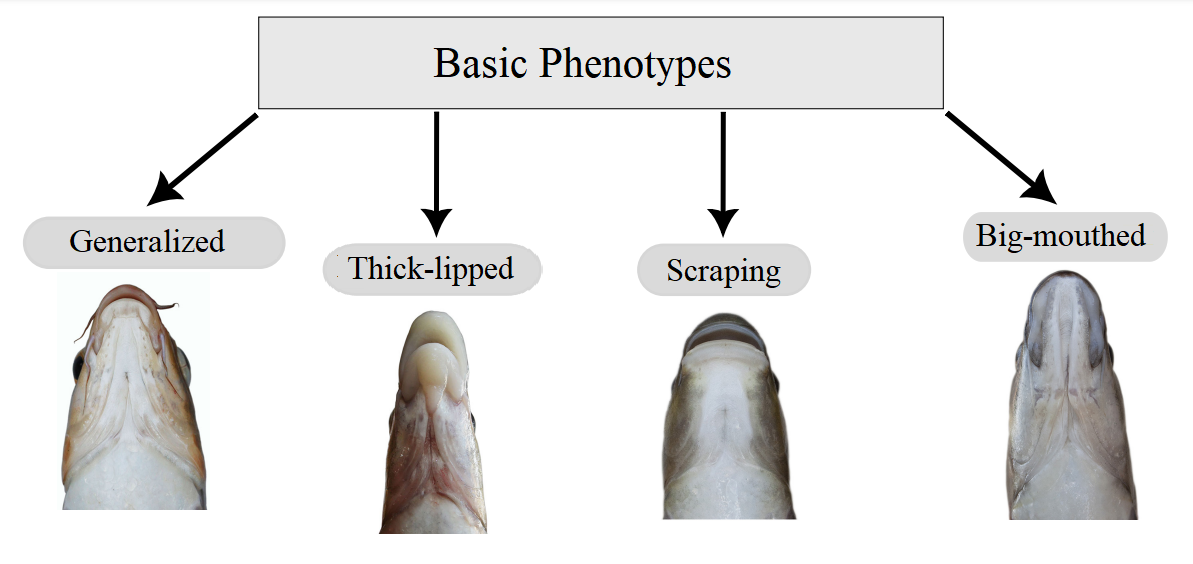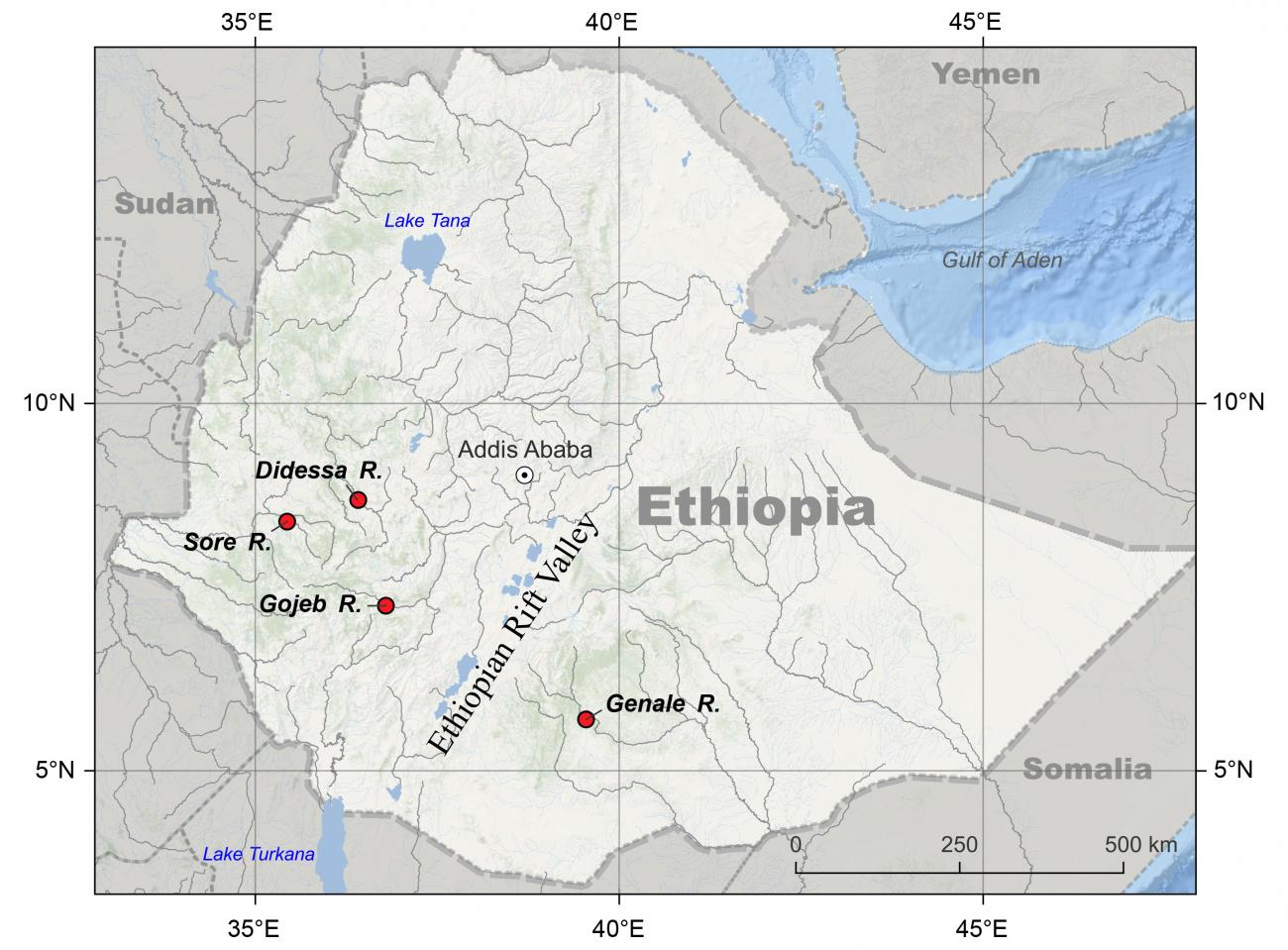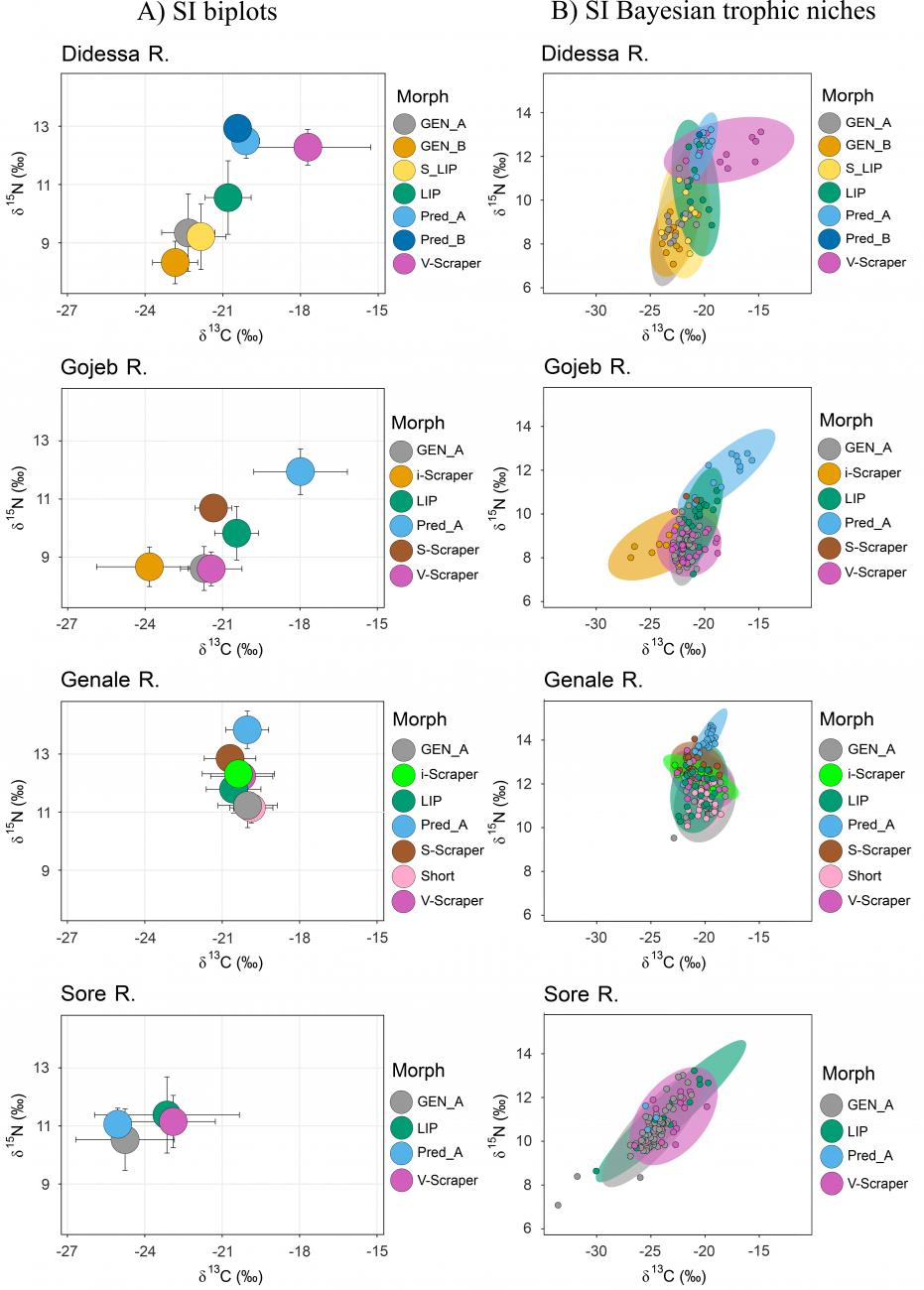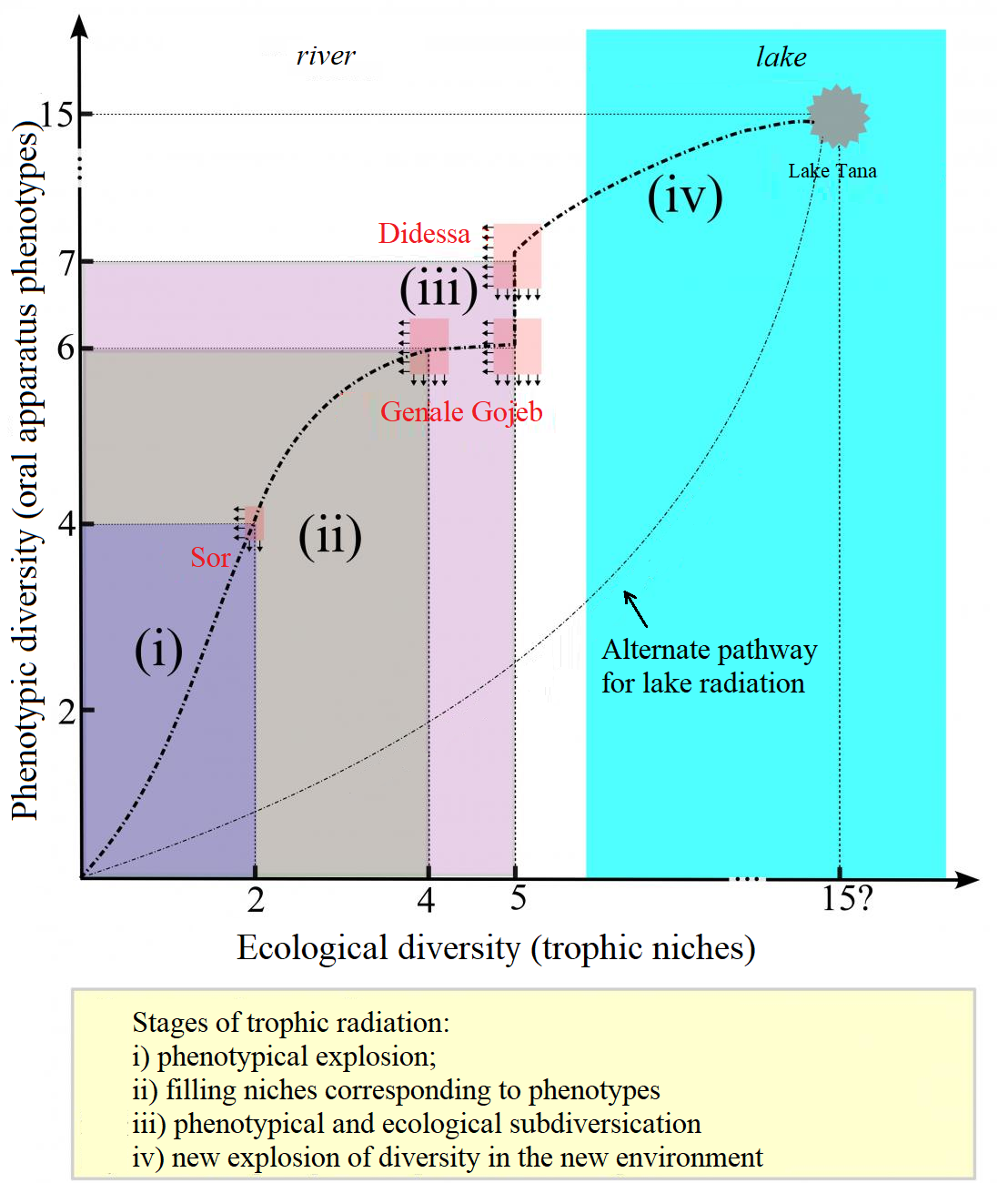
One of the most striking biological phenomena is adaptive radiation - the evolution of ecological and phenotypic diversity within a rapidly diversifying line. Adaptive radiations have long been studied by scientists at the Institute of Ecology and Evolution of the Russian Academy of Sciences, including in the ecosystems of tropical Africa. Unique conditions for the flourishing of multiple adaptive radiations of carp fish (Cyprinidae) have developed in the river ecosystems of the Ethiopian Highlands. One of the most successful evolutionary lines of fish in this regard is the polyploid African barbel of the genus Labeobarbus, which produced four parallel adaptive radiations in geographically isolated river basins of the Ethiopian Highlands. These radiations have been studied quite well using morphological and genetic methods, but almost no ecological studies have been conducted to confirm the adaptive nature of the discovered fish diversifications. "The morphological diversification of African barbel is associated, first of all, with the polymorphism of the oral apparatus. Four basic phenotypes were noted: 1) generalized, 2) thick-lipped with hypertrophied lips, 3) scraping mouth without lips, but with a cutting sheath on the lower jaw, and 4) large-mouthed (potentially piscivorous). To test the hypothesis - to what extent different phenotypes of the oral apparatus are adapted to the division of trophic resources and, accordingly, represent cases of trophic specialization - we undertook a more detailed study using classical (analysis of the food bolus and the length of the intestinal tract) and modern (analysis of stable isotopes of nitrogen and carbon) trophological methods, ”says the first author of the article, an employee of the laboratory of environmental monitoring of NPP regions and bioindication B.A. Levin. The study showed that the four radiations are at different stages of development - both in terms of the number of mouth phenotypes (within individual types, subtypes are also noted) and in terms of the degree of trophic specialization. In total, up to 5 trophic specializations were found in three radiations: 1) detritophagy, (2) macrophytophagy, (3) benthofagia, (4) periphytonophagy, and (5) piscivorous.

However, one of the most surprising discoveries of this work was the discovery of the absence of a connection between the phenotype of the oral apparatus and trophic specialization in the youngest radiation (according to genetic data). It turned out that carriers of different phenotypes consumed mainly the same food, the most common in river conditions - detritus. Moreover, no differences were noted between ecomorphs in stable isotopes, which indicates that this phenomenon is not accidental. A similar phenomenon - the feeding of individuals with pronounced features of trophic specialization on generalized, or the most accessible, basic food, is called Liem's paradox. It may have different causes, which the authors consider in their work. But in relation to African barbels, most likely, the complex polyploid genome, generating different phenotypes of the oral apparatus, worked. The parental lines that participated in polyploidization and the formation of the African Labeobarbus lineage are characterized by different mouth phenotypes - generalized, thick-lipped, and scraping. Accordingly, the results obtained by the authors indicate that first, morphological diversity of the oral apparatus phenotypes arises in the African Labeobarbus population, and then ecological functionalization of each phenotype occurs. This somewhat contradicts the classical ideas about adaptive radiations, but adds fuel to the development of the “plasticity-first evolution” hypothesis.

Fig. 3. Food spectra of sympatric ecomorphs of barbels in four radiations
In the article, the authors also touch upon other issues related to adaptive radiations in the presence/absence of ecological opportunities depending on the developing ecological-evolutionary situation in the reservoir, including the well-known intra-lake adaptive radiation of barbels in Lake Tana (Ethiopia).

Fig. 4. Biplots and isotopic niches of sympatric ecomorphs of barbels from four adaptive radiations
The article is published in the journal Q1 Scopus – Hydrobiologia https://link.springer.com/article/10.1007/s10750-024-05668-2

The full-text PDF version of the article is available on the ResearchGate profile of the authors.
The study was supported by the Russian Science Foundation grant 19-14-00218 "Adaptive radiation and speciation in carp fishes under sympatry conditions".
